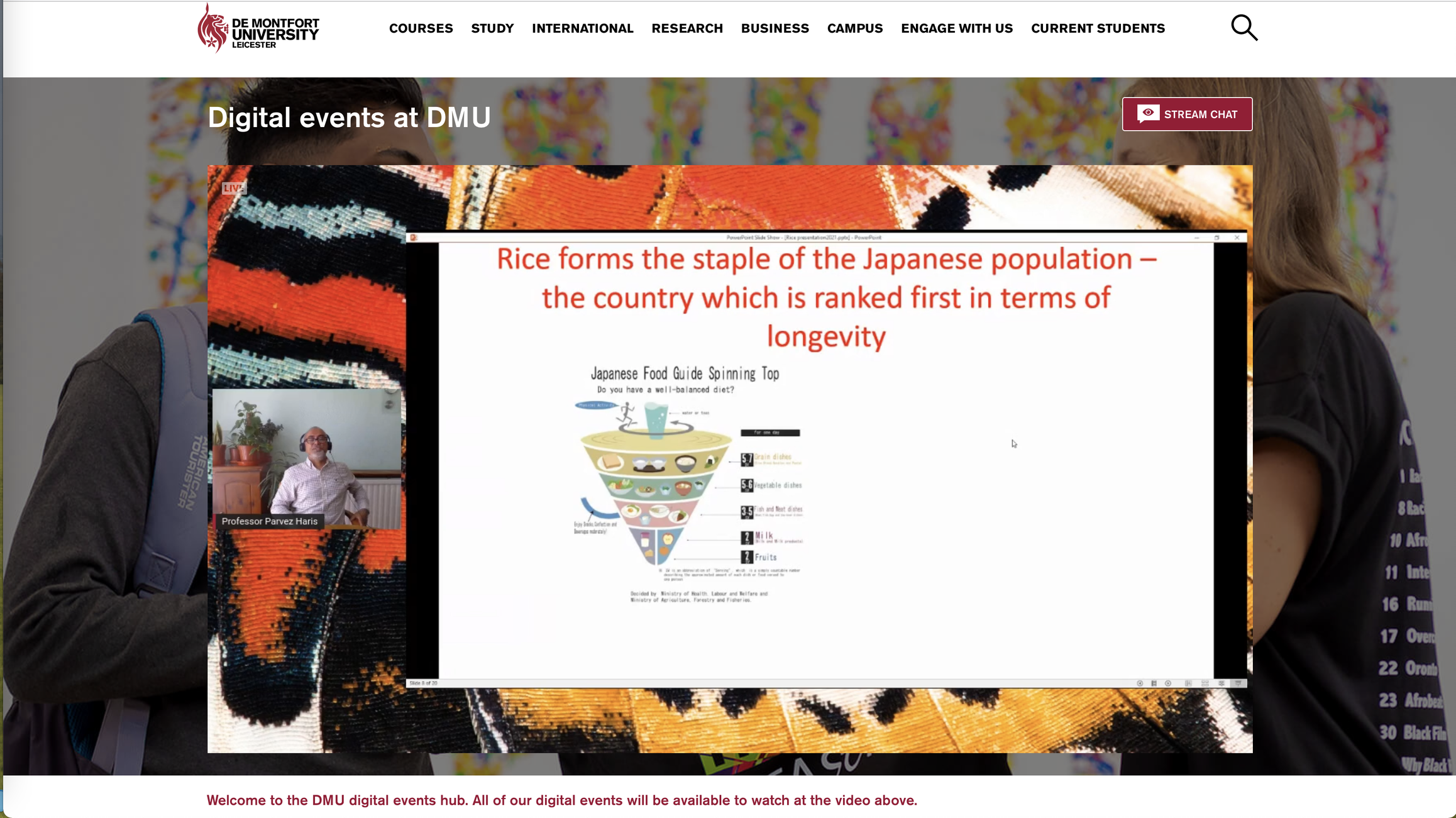UK University lecture gives tips on food safety and the most consumed staple in the world - rice
Professor Parvez Haris of de Montfort University in the United Kingdom of Great Britain and Northern Ireland gave a lecture for World Food Safety Day on the ways in which rice can become contaminated and ways to address what can sometimes be a serious problem.
He highlighted the fact that rice is a staple food for more than half the world’s population and it therefore has a key role in food production and consumption: it is the cereal with the highest caloric density and people in South and Southeast Asia depend upon rice for up to 70% of their calories.

Professor Parvez Haris, De Montfort University, UK, gives online lecture on arsenic in rice
However, rice can naturally become contaminated with inorganic arsenic, which in itself is not a problem, but, as Professor Haris underlined, can accumulate in people who eat a lot of rice or who are exposed to multiple sources of arsenic. People from cultures like Bangladesh, where rice is traditionally consumed in large quantities, can be vulnerable to problems associated with an excessive consumption of arsenic-contaminated rice.
Excessive consumption of rice is also associated with type-2 diabetes and contamination from other heavy metals such as cadmium and lead, as well as pesticide residues. Rice is also vulnerable to contamination from Bacillus cereus spores and mycotoxins.
Professor Haris drew a comparison between relatively high instances of illness resulting from contaminated rice in Bangladesh and the high life expectancy of the Japanese, who also traditionally eat a lot of rice. The difference, he pointed out, is that the Japanese diet is much more diverse and includes a lot of fish and vegetables. It is this diversity that many Bangladeshis cannot afford – even though Bangladesh’s economy is growing fast, and people are becoming wealthier, the many “left behind” are unable to afford the fish and vegetables that would make their diets more nutritious and varied.
the right dose differentiates a poison
He outlined a number of ways in which he believes these problems can be addressed or mitigated. He quoted Paracelsus’ famous aphorism that “All substances are poisons … the right dose differentiates a poison,” to highlight the point that generally, eating rice is not dangerous because most people do not eat enough for the arsenic to cause a problem. For the Professor, knowledge is key, and consumers should have the knowledge, both in education on what arsenic contamination is, and in food labelling, to know what levels exist in any given food. The public, he says, should be informed so they can take a “knowledge-based approach to diet.” Research is also important and a holistic approach from multiple sectors and across different nations should be undertaken.
Research has revealed that there are a number of varieties of rice that absorb less arsenic, and research has also suggested that arsenic is more likely to be absorbed into rice that grows in polluted soil and water. Indeed, irrigated rice is more contaminated than rain-fed.
On a practical level, the consumer can pre-soak rice and cook it in excess water (although this impacts on water use), inform themselves on the varieties that absorb less arsenic and choose them over others. To address the bacterial and fungal hazards mentioned above, he recommended ensuring proper storage and attention to use-by dates. He also made reference to Codex work on inorganic arsenic rice.
More on Professor Haris’ work
Categories
- (11)
- (3)
- Animal Feed (8)
- Antimicrobial Resistance (39)
- Antimicrobial Resistance (78)
- CAC46 (15)
- Codex Texts (20)
- Codex Trust Fund (1)
- Codex60 (19)
- Contaminants (13)
- Contaminants (10)
- COVID-19 (64)
- Elections (6)
- Food Safety (126)
- Labelling (10)
- Nutrition and Labelling (5)
- Nutrition and Labelling (7)
- Observers (23)
- Pesticides (7)
- Standards (78)
- World Food Safety Day (154)


